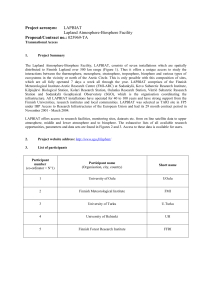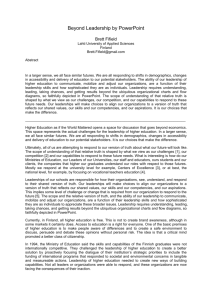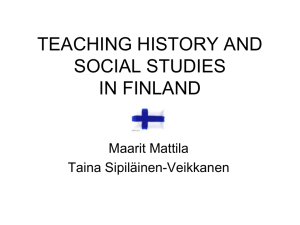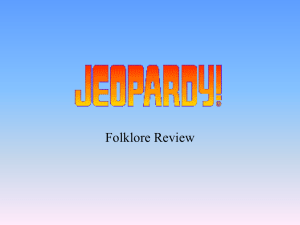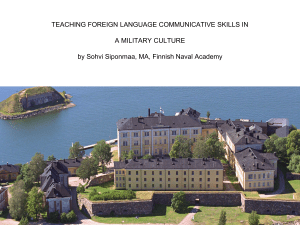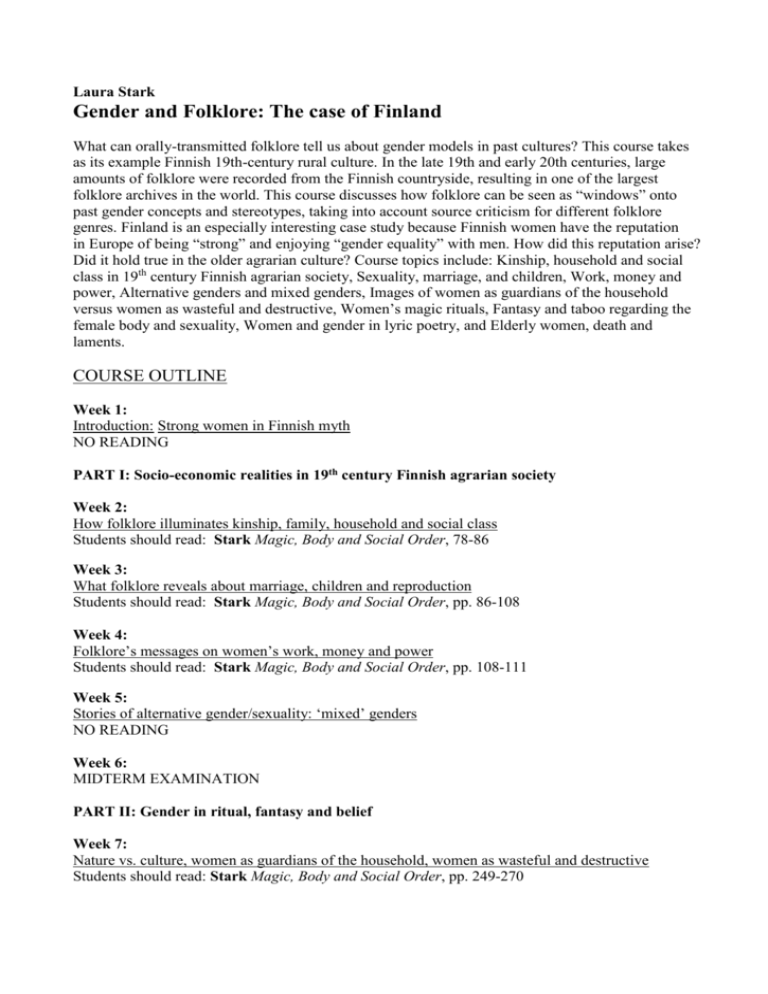
Laura Stark
Gender and Folklore: The case of Finland
What can orally-transmitted folklore tell us about gender models in past cultures? This course takes
as its example Finnish 19th-century rural culture. In the late 19th and early 20th centuries, large
amounts of folklore were recorded from the Finnish countryside, resulting in one of the largest
folklore archives in the world. This course discusses how folklore can be seen as “windows” onto
past gender concepts and stereotypes, taking into account source criticism for different folklore
genres. Finland is an especially interesting case study because Finnish women have the reputation
in Europe of being “strong” and enjoying “gender equality” with men. How did this reputation arise?
Did it hold true in the older agrarian culture? Course topics include: Kinship, household and social
class in 19th century Finnish agrarian society, Sexuality, marriage, and children, Work, money and
power, Alternative genders and mixed genders, Images of women as guardians of the household
versus women as wasteful and destructive, Women’s magic rituals, Fantasy and taboo regarding the
female body and sexuality, Women and gender in lyric poetry, and Elderly women, death and
laments.
COURSE OUTLINE
Week 1:
Introduction: Strong women in Finnish myth
NO READING
PART I: Socio-economic realities in 19th century Finnish agrarian society
Week 2:
How folklore illuminates kinship, family, household and social class
Students should read: Stark Magic, Body and Social Order, 78-86
Week 3:
What folklore reveals about marriage, children and reproduction
Students should read: Stark Magic, Body and Social Order, pp. 86-108
Week 4:
Folklore’s messages on women’s work, money and power
Students should read: Stark Magic, Body and Social Order, pp. 108-111
Week 5:
Stories of alternative gender/sexuality: ‘mixed’ genders
NO READING
Week 6:
MIDTERM EXAMINATION
PART II: Gender in ritual, fantasy and belief
Week 7:
Nature vs. culture, women as guardians of the household, women as wasteful and destructive
Students should read: Stark Magic, Body and Social Order, pp. 249-270
Week 8:
Women’s personal goals as revealed in their magic rituals
Students should read: Stark Magic, Body and Social Order, pp. 131-151, 152-178, 194-202.
Week 9:
The male and female body and sexuality (fantasy and taboo)
Students should read: Apo “’Ex cunno Come the Folk and Force”: Concepts of Women’s
Dynamistic Force in Finnish-Karelian Tradition; Stark Magic, Body and Social Order, pp. 203-247
Week 10:
Women and gender in lyric poetry
Students should read: Timonen “’Every Tree Bites Me’: North Karelian Lyric Poetry”
Week 11:
Riddles, proverbs and gender
Students should read: Kaivola-Bregenhøj “Sexual Riddles: The Test of the Listener”
Week 12:
Elderly women, death and laments
Students should read: Utriainen “Feminine and Masculine in the Study of Balto-Finnic
Laments”
Week 13:
Folklore provides windows onto today’s gender concepts and stereotypes
Students should read: Lipponen, Ulla (1998) “The Joke as an Instrument of Power? Sexual
Relations in Jokes Told by Family Members” ; Apo “Women’s Personal Mythologies”
Week 14:
FINAL EXAMINATION
READING LIST:
Apo, Satu (1998) “’Ex cunno Come the Folk and Force”: Concepts of Women’s Dynamistic
Force in Finnish-Karelian Tradition”, in Satu Apo, Aili Nenola & Laura Stark-Arola (eds),
Gender and Folklore: Perspectives on Finnish and Karelian Culture. Finnish Literature Society,
pp. 63-91.
Apo, Satu (1998) “Women’s Personal Mythologies”, in Satu Apo, Aili Nenola & Laura StarkArola (eds), Gender and Folklore: Perspectives on Finnish and Karelian Culture. Finnish
Literature Society, pp. 332-344.
Kaivola-Bregenhøj, Annikki (2002) “Sexual Riddles: The Test of the Listener”, in AnnaLeena Siikala (ed.) Myth and Mentality. Studies in Folklore and Popular Thought. Finnish
Literature Society, pp. 301-317.
Lipponen, Ulla (1998) “The Joke as an Instrument of Power? Sexual Relations in Jokes Told
by Family Members” in in Satu Apo, Aili Nenola & Laura Stark-Arola (eds), Gender and
Folklore: Perspectives on Finnish and Karelian Culture. Finnish Literature Society, pp. 345360.
Stark, Laura (1998) Magic, Body and Social Order: the Construction of Gender Through
Women’s Private Rituals in Traditional Finland. Studia Fennica Folkloristica 5. Finnish
Literature Society.
Timonen, Senni (1998) “’Every Tree Bites Me’: North Karelian Lyric Poetry” in Satu Apo,
Aili Nenola & Laura Stark-Arola (eds), Gender and Folklore: Perspectives on Finnish and
Karelian Culture. Finnish Literature Society, pp. 201-238.
Utriainen, Terhi (1998) “Feminine and Masculine in the Study of Balto-Finnic Laments”, in
Satu Apo, Aili Nenola & Laura Stark-Arola (eds), Gender and Folklore: Perspectives on
Finnish and Karelian Culture. Finnish Literature Society, pp. 175-200.


